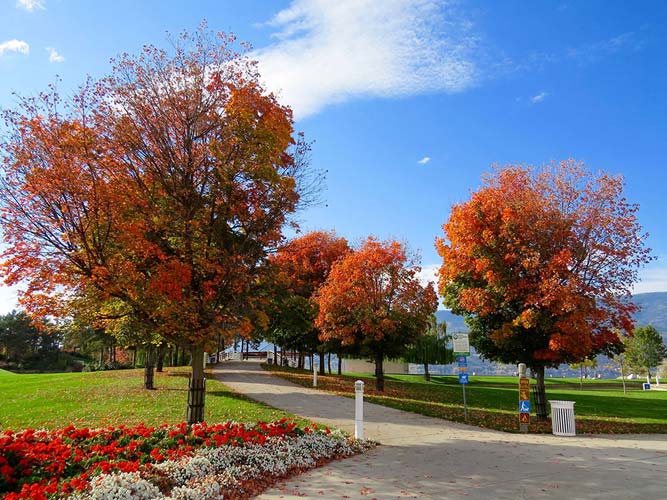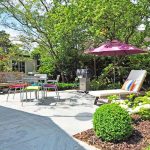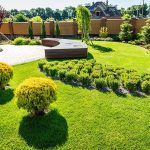Step outside on a nice day and take in your surroundings. It quickly becomes clear that The trees, flowers, pathways, and architecture likely weren’t arranged randomly.
Thoughtful design shaped the environment into an aesthetically pleasing and functional space. This is the essence of landscape design – the art and science of designing outdoor areas. Landscape designers blend horticultural knowledge with artistic vision to create beautiful, sustainable environments tailored to human use. But is landscape design fundamentally an art form or scientific field?
Landscape design originated as an art form in 18th century English gardens. Designers like Capability Brown used artistry and symbolism to make gardens that were as much about evoking emotion as housing plants. Today, ecology and sustainability are prioritized, demanding scientific knowledge. Thoughtful plant selection, stormwater management, and maintenance requirements call for research-backed decision making. Yet creative choices still distinguish outstanding designs. In many ways, landscape design straddles the realms of art and science. Untangling this dichotomy will shed light on a profession that profoundly shapes how we experience and interact with outdoor spaces.
Landscape Design as an Art
Like painting or sculpture, landscape design is a fine art form. Designers employ the elements and principles of art – color, texture, shape, line, proportion – to render beautiful, cohesive compositions. The creative process allows designers to craft spaces reflecting style, emotion, and themes.
For example, a meditation garden may use simple, curved lines, neutral tones, and minimal plant variety to evoke tranquility. Gardens meant to mimic wildlife habitats integrate diverse native species and organic shapes to achieve a natural look. Landscape artistry can transport people mentally and emotionally through immersive experiences.
The Science Behind Landscape Design
While aesthetics are important, landscapes must also meet functional needs for the people and environments they occupy. This is where science becomes critical. Knowledge of plant biology, ecology, geology, hydrology, and more allows designers to select and arrange elements for optimal health and performance.
For instance, native plants suited to local soils and climates often require less maintenance and resources like water or fertilizers. Sustainable techniques like rain gardens, bioswales, and graywater recycling uphold ecological balance. And spaces intended for gathering or recreation rely on principles of spatial dynamics for comfortable flow. Blending science with aesthetics results in thriving, sustainable landscapes.
Balancing Art and Science in Design
Landscape architects such as Frederick Law Olmsted, considered the father of American landscape architecture, exemplify the harmonious balance of art and science in environment creation. Olmsted’s designs of places like Central Park cleverly integrated ecological forms, circulation pathways, scenic vistas, and inclusive amenities within aesthetically stunning landscapes accessible to all.
When art and science find equilibrium, spaces take on sensory dimension and emotional resonance while also fostering wellbeing and functional utility. As sciences evolve and environmental awareness grows, integrating sustainable, regenerative techniques with artistic vision becomes paramount. Uniting beauty and function is key to impactful landscape design.
The Role of Technology
Modern technologies like digital modeling, 3D visualization, GPS mapping, and environmental sensor systems help expand the creative and technical possibilities within landscape design. Digital tools enable interactive concept modeling, allowing clients to visualize designs before construction. Technologies like green roofs, permeable paving, and smart irrigation also lend new capabilities and sustainable solutions.
While technology assists the design process, the ingenuity and care of the landscape architect remain at the center of bringing spaces to life. The art of design comes not just from using tech tools but knowing how to implement them thoughtfully in service of the overall creative vision and functional needs. Technology aids the art-science fusion.
Landscape Design and Cultural Expression
Beyond aesthetics and technicalities, landscape design also offers opportunities for cultural and community connection. Landscapes reflect the heritage, values, and identities of the societies they spring from. Japanese zen gardens, English perennial borders, and New Orleans courtyard gardens link nature with distinctive local cultures.
Public spaces like botanical gardens or memorial parks also foster community identity. Through civic engagement, landscape architects can unearth cultural narratives and memories to inform meaningful designs. At its core, landscape architecture creates spaces for human experience – an undertaking equally artistic, scientific, and cultural.
Educational Paths and Skills
Aspiring landscape architects generally hold undergraduate degrees in landscape design or architecture and a master’s in landscape architecture. Educational pathways integrate courses in horticulture, ecology, art and design, engineering, sustainability, and management. Successful designers never stop learning as they gain experience across projects.
Key skills include spatial awareness, observation of nature, artistic talent, and affinity for environmental systems. Analytical skills help balance vision with practical constraints. Communication, creativity, and ethical values focused on sustainability and inclusion also drive impactful work. With dedication, passion, and a spirit of lifelong learning, landscape architects turn spaces into living art that enriches lives.
Conclusion
In landscape design, the scientific mindset informs while the artistic eye uplifts. Combined, they create spaces enabling communities and nature to flourish in unison. The next time you experience an outstanding landscape, appreciate the artistry and science behind its inception. A masterful balance of both is what establishes environments where people feel truly inspired, tranquil, and at home.



